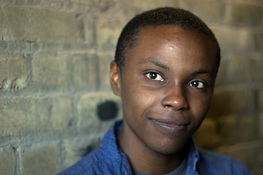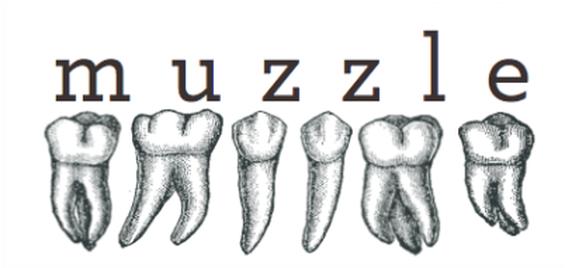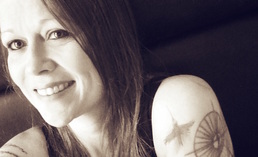Notes on My Wasp Wing TattooSometime in late 2011, I’m sitting in the doctor’s office with my pants slung around my ankles, being taught how to inject myself with testosterone, which will eventually lower my voice & thicken my limbs & make the veins in my forearms bulge like the raised parts of those 3D maps & put stubble on my chin that I’ll never really learn to shave & allow me to move in the world as male, at least mostly. Weeks before this first lesson, I have to recount the history of living in my body to my doctor & two medical students that he is training in this kind of thing & who I’ll never see again. I answer more or less honestly: yes I have a history of depressive episodes & anxiety, yes I’ve been on meds for these, but not right now (though I will be again) & who hasn’t? My doctor—I feel I should mention that he is a white guy, a nice one—then, had told me that, in his experience, his patients generally feel “much better” after beginning hormones; less anxiety, more motivation to stick around. Much of it, he thinks, (& by “it” I assume he means feeling bad) is due to the stress of appearing to the world as what one is not & I smile though am, in fact, bewildered. For as long as I’ve been aware that I exist, I’ve been the kind of person who feels somehow alien to the world of other people, for innumerable reasons or for no reason at all. So, you’ll have to forgive me for thinking this an odd prediction, that I will begin looking more like my father & then suddenly feel as though I can walk around at ease. This doctor, I think, was imagining the hormones as a kind of time travel device, as if they would undo my years as a black kid in a white majority city & then suburb; as an over-achieving child of academics who was consequently called upon by teachers to account for the academic “failure” of the other black kids in my school, even though we came, many of us, from different worlds & I was just a kid who didn’t know anything at all; as a girl who wasn’t quite one; as the child of a depressive who, consequently, paid far too much attention to the adult world & its incessant & mundane violences & who, like all girls (of all sexes), entered adolescence & then became intimately acquainted with the entitlement of men. As if everything that had gone into making me would dissipate & eventually disappear. In 2011/2012, then, I was searching for other ways of thinking about gender, about having a past, about having been a little girl; I didn’t want to become unrecognizable to myself. Fortunately, sometime during this period, my will-be dear friend Sam read to me from Lauren Berry’s The Lifting Dress, which opens with a poem in which the protagonist (The Just-Bled Girl) is mute when faced with a doctor who is described as a “beautiful thing,” but seems instead dumbly comical & dangerous. The poem declares: “There must be hundreds / of ways to be a girl.” Indeed. From here, we are pushed into “Notes on How to Love a Boy,” which is a poem I come back to whenever I find myself feeling somehow only adjacent to the rest of the human world. “Notes on How to Love a Boy” is about many things, but most obviously it is about identifying with the non-human world, a meditation on the gendered effects of having been ruined / of ruining. It tells the story of a neighborhood boy who is stung, terribly, by wasps in the protagonist’s backyard while she “indolent in a rusted lawn chair, did nothing.” But more than doing nothing, she is clearly delighted by how the boy is “Red. Wrecked.” perhaps because she understands that these wasps were defending themselves from his invasion, as she could not. Consequently, more than with her mother who pays the boy’s hospital bill & writes a note warning others to keep out, the girl identifies with the hive, imagines herself growing up to join them; on the edge of adolescence she wants “stingers instead of leg hair. Instead of legs.” After all, in the human world the boy is cared for at the mother’s expense & we have to understand that this “expense” is monetary, but that it is also much more general. The Lifting Dress, in the most basic summary, is the story of a girl coming to understand the gendered world after having just been raped by “The Big Man” who lurks in the image of this boy. In his encounter with “The wasp world” however, the boy (who, remember, is the one who has entered the world of The Just-Bled Girl without invitation, who has disturbed the hive) isn’t cared for in the aftermath of his transgression, but comes away as red & wrecked as the little girl had been. However, rather than trying to create an all-female world (as the mother does when she hangs a sign warning the neighborhood boys to keep out), The Just-Bled Girl finds herself drawn to the world of men & boys: “The wasp world was one that loved boys / as wrong as I did. Why was it that our mission / was to make men less beautiful?” This is a queer (trans?) circuit of identification: the girl, by loving boys wrong, seeks to make them more like herself & in order to do this, she has to become something other than a woman. Or, at least, become a woman differently than her mother. Of course, given wasp social structures, where most hives are organized around a single queen, it’s more than likely that these wasps were male, even though the girl sees them as “lady-wasps.” But, also, since the hive functions as more or less one organism, the male wasps are ladies, in a way. Here is a world where gender works differently, where male energy is organized in service of & not against the female body, which is why The Just-Bled Girl’s incessant identification with the non-human world (oleander trees, wasps, horses, wolves, carnations, a barrette, secondhand furniture, berries…) is both a symptom of her victimization & her resistance to it, her defiance of the logic of gender, her attempt to navigate the world on different terms: “Red. Wrecked. Those insects rushed to his eyelids / without fear. Of all the women / in the world, I find my sisters here.” Though they love The Lifting Dress nearly as much as I do, my friends seem not to understand my intense identification with it—the book as a whole & this poem in particular—in part because Lauren Berry is a white cis woman from Florida & I am a black boi from the Midwest/East Coast: I’m certain we have very little in common. Still, for whatever reason, it is white female poets (Anne Carson, Sharon Olds, Maggie Nelson, Lauren Berry, Anne Sexton, to name a few) who have given me the most robust language I have for understanding myself, for making sense of how the experience of having been a girl can produce a kind of perversity/strangeness that is like faggotry, but is not quite. Near the end of The Lifting Dress, there is a poem in which the protagonist, no longer just-bled, fantasizes about fucking an oleander tree, doing to it what had been done to her as a child, because they are so alike, because “it’s what I look like.” While the idea that little girls’ sense of self is somehow more permeable than little boys’ is a cliché & is too often used to justify the continual production of narratives in which girls grow up to repeat their mothers’ mistakes, the way that Berry works this idea produces something quite queer, in all its senses: a world the little girl I was can inhabit & from which I can emerge without leaving her behind. Link to "Notes on House to Love a Boy" by Lauren Berry: http://www.versedaily.org/2011/howtoloveaboy.shtml  Cameron Awkward-Rich is the author of Sympathetic Little Monster (Ricochet Editions, 2016) and the chapbook Transit (Button Poetry, 2015). A Cave Canem fellow, his poems have appeared/are forthcoming in The Journal, Vinyl, The Seattle Review, cream city review and elsewhere. Cam is currently a doctoral candidate in Modern Thought & Literature at Stanford University. Find him at cawkwardrich.com. The Violence Question, Answered by a Goat |
Vital Signs:
|


 RSS Feed
RSS Feed